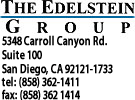



The EXCEL Program
Much has been written about the need for companies to keep pace with rapid change. In his book, The Fifth Discipline, Peter Senge describes the need to create the Learning Organization: a company that grasps, manages, and effectively responds to changes in the marketplace that affect its business. Senge and others implore companies to transcend their drive toward homeostasis, or the status quo, and remain open to information that will allow it to change and grow.
This need exists on the executive level as well. In fact, if we are to have learning organizations, we must have learning executives. Executives, like companies, also move toward homeostasis and resist change. Subject to their own psychological defenses, aided and abetted by the organizational tendency to cleanse feedback or just not provide it, executives become closed loop systems. Cut off from feedback, they are unable to accurately gauge their decisions and impact. Therefore, over time, they lose touch with their impact and become less effective. Typically, without valid data by which to correct their behavior, executives fall back on historically correct responses, which may not be responsive to the task at hand.
In addition, the business environment in which executives work is continually changing. If not external business conditions, then restructuring of the company itself, has resulted in a premium being placed on a wholly different management skill set. Today, the ability to influence, persuade, sell one's ideas and manage across functions is key, since the top down, control oriented bureaucracies have fallen by the wayside.
EXCEL was designed to respond to these issues. EXCEL is a one-to-one, feedback intensive, executive development program. Through structured, individual meetings spread over ten months, participants learn:
- how personal and work history effects management behavior.
- how others perceive them in the workplace as reflected in anonymous feedback forms completed by 20-25 peers, subordinates and
superiors.
Click for 360º survey form - how to modify their management behavior so they are responsive to the demands of the work environment. Progress is assessed through follow-up surveys.
EXCEL Program features include:
- Typically, ten, one-to-one meetings, spread over ten months. The one-to-one format enables the time to be devoted to participants' needs and makes possible an environment where they can address issues critical to their own development as executives.
- 360º survey feedback from 20-25 subordinates, peers and superiors, utilizing "objective" Management Factors and "subjective" Narrative Comments. Click for 360º survey form
- Face-to-face interviews to collect feedback from selected peers, subordinates, superiors and spouse or significant other.
- Administration of a standardized test and generation of a report that ascertains reflexive management behaviors.
- Development Plan - development of a custom Plan that is responsive to feedback and workplace requirements.
- Coaching - revision of the Plan based upon the participant's experience with it. Post-mortems are conducted on specific workplace experiences and upcoming situations are discussed, taking into account the workplace feedback.
- Sharing of workplace feedback and Development Plan with participant's direct reports to acknowledge receipt of feedback and soliciting their support of participant's efforts to make management behavior change.
- Facilitation of meeting with participant's boss to review workplace feedback and Development Plan and to solicit help in implementing Plan.
- Followup 360º survey to determine progress made in implementing Plan and what work remains undone.
The first EXCEL Program objective is to: help executives identify their most characteristic, reflexive, managerial behavioral responses, and determine when these are and are not responsive to the task at hand.
When the reflexive response is truly responsive (and participants are not merely reacting), then they may continue on with what comes most naturally. However, when it is not:
The second EXCEL Program objective is to: develop alternative management behaviors that will enable executives to deal effectively with the situation.
The goal of the program is to help executives develop sufficient flexibility so that management behavior may be adjusted to fit the person or situation. In effect, EXCEL is applied "Situational Leadership." However, what distinguishes EXCEL from Hersey and Blanchard's Situational Leadership Model, is that the focus is on the participant and the development of self-knowledge rather than on figuring out what others around them need.
For example, Situational Leadership prescribes that if an executive is leading a mature work group it is not necessary to provide a lot of structure. Rather, the executive needs to back-off and allow the group to do the work. However, if the executive does not see him or herself as a control-oriented, take-charge executive, the need to back-off may not be apparent. Thus, the executive could believe in the tenets of Situational Leadership, but not be able to effectively put theory into practice because of a lack of self-knowledge and a limited management behavior repertoire.
Therefore, by the end of the EXCEL Program the executive will:
- Be aware of reflexive responses to people and situations.
- Know when reflexive responses are not responsive to the task at hand.
- Be able to forestall reflexive management behaviors.
- Draw from a broader repertoire of management behaviors and utilize those most effective .
Benefits of this approach include:
- The entire focus is on the executive's needs. In addition, within this confidential relationship, the executive is able to take an open and honest look, arriving at a more accurate self-concept.
- Since the program is based upon feedback from the workplace, the executive is working on issues that are highly relevant.
- Since the program occurs over time, the executive returns to the workplace and has an opportunity to experiment with new management behavior while still in the program. This increases the likelihood that learning will be transferred to the workplace.
- Typically, one session is spent sharing EXCEL feedback with the executive's supervisor. This enables the supervisor to: understand which management behaviors are being modified and which situations are being handled differently, clarify points that remain unclear, and learn how to be supportive during the change process.
The value of this approach lies in the fact that:
- Learning is integrated. Examination of personal and work history encourages the executive to take responsibility for management behavior.
- An accurate self concept and clear understanding of impact upon others is achieved through the EXCEL feedback. Perhaps the single most important reason training and development programs fail is that the executive does not possess an accurate picture of his or her performance. Consequently, the executive is unsure of what must be learned.
Management Factors
Survey Form
Home | Consulting Programs | About Us | Principals of the Firm | Locate & Contact Us | Pre-employment Assessment | Individual Executive Development | Executive & Team Development